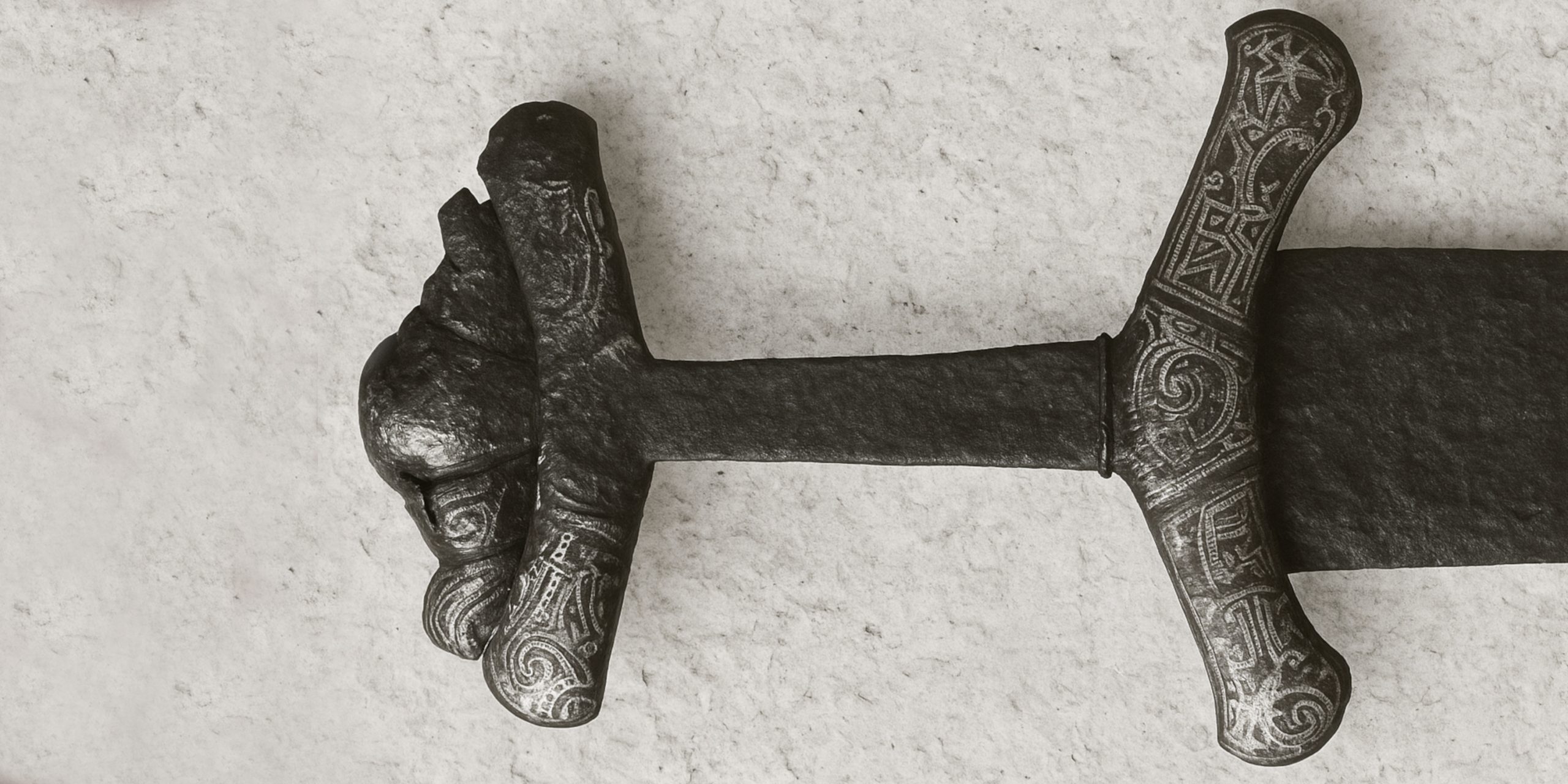
The Petersen Type Z sword marks one of the final developments in Viking Age sword typology. Emerging in the late 10th and early 11th centuries, this sword type represents a transitional form bridging traditional Viking blades and early medieval knightly swords. It is distinctive for its unique hilt construction and was likely carried by individuals of considerable status. Although rarer than earlier types, it offers valuable insight into the tail end of Norse swordsmithing traditions.
Specifications
| Feature | Detail |
|---|---|
| Date Range | c. 975 to 1050 AD |
| Blade Length | Typically 70 to 80 cm |
| Total Length | Around 90 to 100 cm |
| Blade Type | Double-edged, straight, broad, usually with shallow fuller |
| Pommel Type | Tri-lobed, often thick and rounded |
| Guard | Short, curved downwards or flat |
| Construction | Pattern-welded core less common; monosteel more typical |
| Grip | One-handed, wood core with leather or textile covering |
| Weight | Around 1.1 to 1.4 kg |
History and Evolution
The Type Z sword was classified by Jan Petersen in his seminal 1919 typology of Viking swords. It is one of the least common types in the typology, likely due to its short period of use and the limited geographical spread of examples.
Key evolutionary notes:
- Emerged after the more common Types H, K, and X.
- Often found in late Viking contexts, alongside Christian grave goods.
- Represents the shift toward continental European sword styles with more massive pommels and guards.
This type may also indicate a functional evolution. Rather than being optimised for slashing alone, Type Z swords hint at increased thrusting capability, a trait that would define later medieval swords.
Advantages and Disadvantages
Advantages:
- Durable Construction: Later forging methods meant stronger, more reliable blades.
- Improved Handling: The weight distribution and broader blade allowed for powerful cuts.
- Status Symbol: Its rarity and form made it a mark of high rank or wealth.
Disadvantages:
- Rarity: Limited use and few surviving examples make study and reconstruction difficult.
- Less Balanced Than Later Swords: Heavier hilts could create handling inefficiencies.
- Late Appearance: Came at the end of the Viking Age, offering little long-term influence.
Comparison with Similar Weapons
| Feature | Petersen Type Z | Petersen Type X | Carolingian Swords |
|---|---|---|---|
| Period | c. 975–1050 | c. 950–1100 | c. 750–900 |
| Pommel | Large, lobed | Brazil nut or simple cap | Broad, 3-lobed |
| Blade Profile | Straight, wide | Tapering, more slender | Straight, broad |
| Functional Design | Balanced for cutting | Balanced for cut and thrust | Primarily cutting |
| Rarity | Rare | Common | Moderately common |
| Transitional Features | Yes | Yes | No |
Type Z swords bridge the aesthetics of Viking tradition with the evolving needs of continental warriors, placing them historically at a point of technological and cultural transition.
Legacy
While not as numerous as other sword types, the Type Z remains significant for what it symbolises: the end of the Viking sword tradition and the beginning of a new era in European martial equipment. It has become an object of interest among historians, reenactors, and collectors for its distinctive character and rarity.
Its influence is seen in later medieval weapons, especially the heavier cruciform swords that would dominate the 11th and 12th centuries.
Where to See
Museum Collections:
- National Museum of Denmark (Copenhagen) – Houses a reconstructed Type Z based on Norwegian finds.
- Kulturhistorisk Museum (Oslo) – Includes examples from Norwegian burial sites.
- British Museum (London) – Holds fragments and components from late Viking Age swords.
Collector’s Guide
Type Z swords are among the rarest Viking swords in private collections. Complete examples are exceedingly uncommon, and even partial finds are often held in institutional collections.
Auction Prices and Market Insight:
| Condition | Auction Estimate (GBP) | Notes |
|---|---|---|
| Complete (authenticated) | £60,000–£100,000+ | Extremely rare; mostly museum pieces |
| Partial (blade or hilt only) | £15,000–£40,000 | Dependent on provenance and preservation |
| Reproduction (high-end) | £1,000–£3,000 | Used in reenactment or display collections |
Collectors should be cautious. Many so-called Viking swords on the market are mislabelled or heavily restored. Provenance, metallurgical analysis, and consultation with a reputable expert are essential when purchasing any alleged Type Z.



